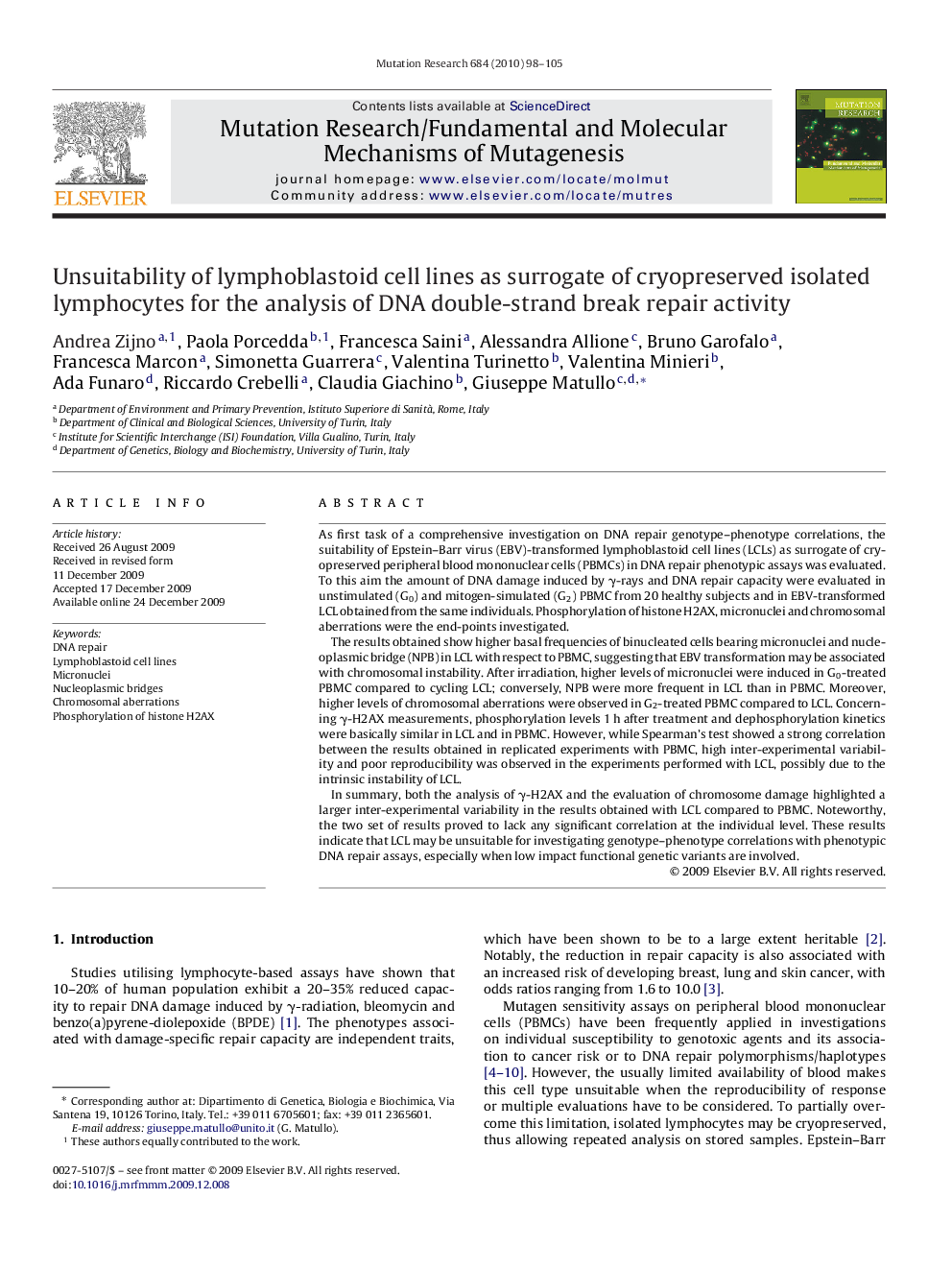| Article ID | Journal | Published Year | Pages | File Type |
|---|---|---|---|---|
| 2146884 | Mutation Research/Fundamental and Molecular Mechanisms of Mutagenesis | 2010 | 8 Pages |
As first task of a comprehensive investigation on DNA repair genotype–phenotype correlations, the suitability of Epstein–Barr virus (EBV)-transformed lymphoblastoid cell lines (LCLs) as surrogate of cryopreserved peripheral blood mononuclear cells (PBMCs) in DNA repair phenotypic assays was evaluated. To this aim the amount of DNA damage induced by γ-rays and DNA repair capacity were evaluated in unstimulated (G0) and mitogen-simulated (G2) PBMC from 20 healthy subjects and in EBV-transformed LCL obtained from the same individuals. Phosphorylation of histone H2AX, micronuclei and chromosomal aberrations were the end-points investigated.The results obtained show higher basal frequencies of binucleated cells bearing micronuclei and nucleoplasmic bridge (NPB) in LCL with respect to PBMC, suggesting that EBV transformation may be associated with chromosomal instability. After irradiation, higher levels of micronuclei were induced in G0-treated PBMC compared to cycling LCL; conversely, NPB were more frequent in LCL than in PBMC. Moreover, higher levels of chromosomal aberrations were observed in G2-treated PBMC compared to LCL. Concerning γ-H2AX measurements, phosphorylation levels 1 h after treatment and dephosphorylation kinetics were basically similar in LCL and in PBMC. However, while Spearman's test showed a strong correlation between the results obtained in replicated experiments with PBMC, high inter-experimental variability and poor reproducibility was observed in the experiments performed with LCL, possibly due to the intrinsic instability of LCL.In summary, both the analysis of γ-H2AX and the evaluation of chromosome damage highlighted a larger inter-experimental variability in the results obtained with LCL compared to PBMC. Noteworthy, the two set of results proved to lack any significant correlation at the individual level. These results indicate that LCL may be unsuitable for investigating genotype–phenotype correlations with phenotypic DNA repair assays, especially when low impact functional genetic variants are involved.
